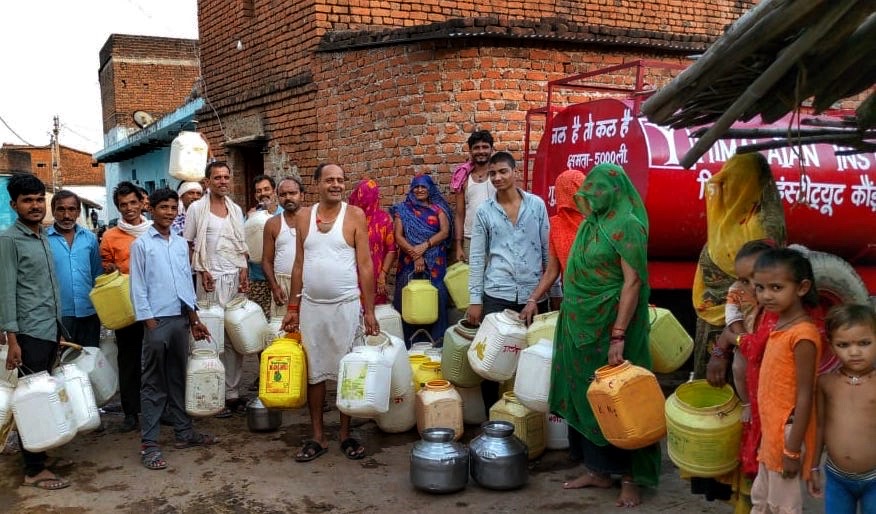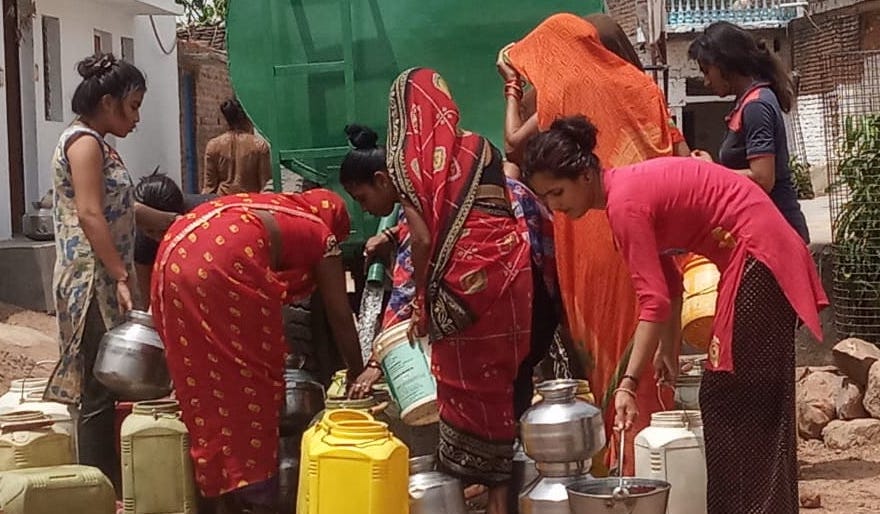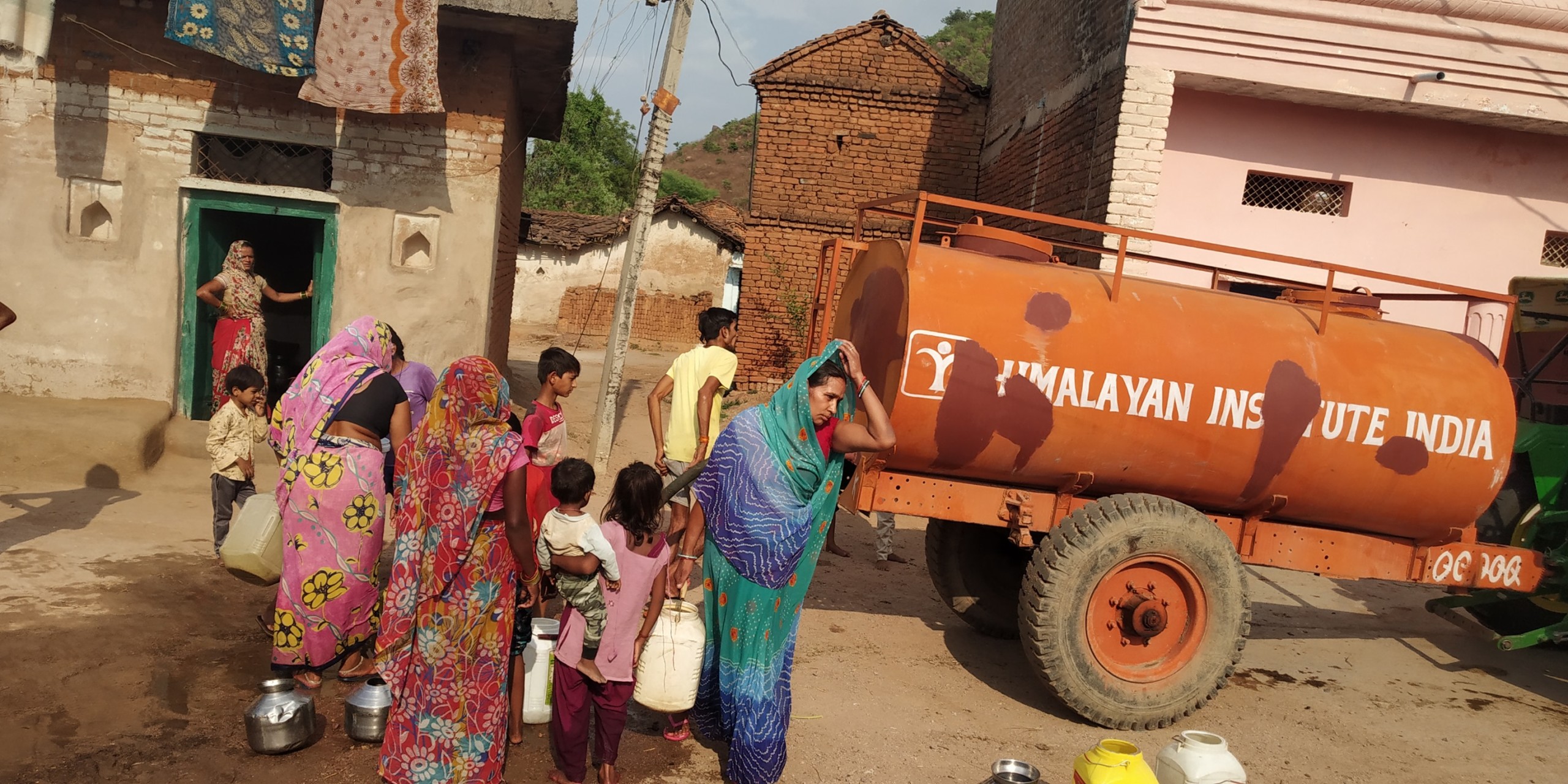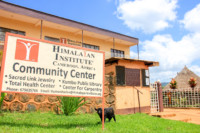On March 22nd P.S. Reddy, project manager for the Energy Farming Pilot Project at the Tibetan Rabgayling Settlement, finished the planting of 10,000 seeds of pongamia pinnata. Many members of the project’s founding group were there to assist in the work. Rigden, Rabgayling’s Agricultural Extension Officer, and Himalayan Institute representatives, Kiran and Virat Xavier, all rolled up their sleeves to help to finish the job.
The Energy Farming team, with members from India, the United States, and the Tibetan Settlements, has been working hard to prepare for the planting. The team first went to the nursery area and planned out what was necessary to start the project. They organized a general clean up and painting the storage room and the gate.
The next step was to plow and level the land for the placement of the seedling bags. A mixture of sand, cow manure, red and black soil was ordered. Reddy prepared the correct mixture and had it placed into the cylinder-shaped, black polybags. Then the filled poly bags were stacked in rows of 10. At this time a question was asked of Reddy, “Why only 10 bags per row, why not 20 or 30?” P.S. Reddy replied, “The reason is that it is easier to water and weed 10 plants, but if you have more it’s hard to reach them.” Reddy has a master’s degree in botany and five years practical field training working with pongamia. Reddy is currently senior agronomist for Earth BioEnergy, a social venture specializing in Pongamia energy farming, which serves as a technical partner for the Tibetan Energy Farming project.
While the bags were being filled, Reddy was also busy on the phone trying to find a place to purchase the rods and screens for the nursery. He found that it was not as easily done as in his home city of Hyderabad. “Here it’s hard to find supplies. We sometimes have to travel to Mysore two hours away, to get some needed supplies.” Even with these challenges, the planting of the 10,000 seeds was completed. The whole process took 20 days. The majority of these pongamia seedlings are destined for the project’s main demonstration plot about a mile away. Some of these seedlings will be planted along the elephant trench, which will help to deter elephants from entering the settlement’s farm land.
The elephant trench is being built at this present time to prevent the encroachment of the herds of elephant from the Ravi Gandhi National Forest. A Tibetan farmer voiced his feeling about the elephants, “They come stampeding into the Tibetan settlement; destroying our crops and creating a threat to our settlement.” When the elephant trench is finished in May of this year, it will be 7 miles long and 11 feet deep. The seeds and leaves of the pongamia trees are not edible and the scent acts as a natural animal repellent. Together, the trench and the line of pongamia should keep the settlement safe from further stampedes.
With the first phase of the project complete, the Energy Farming team will now begin the second phase at the plantation site about a mile away. Already, the Energy Farming project has brought new jobs and opportunities to the Tibetan Rabgayling Settlement.
For more information about the Himalayan Institute Energy Farming project at the Tibetan Rabgayling Settlement, see “Energy Farming Plants New Seeds”.
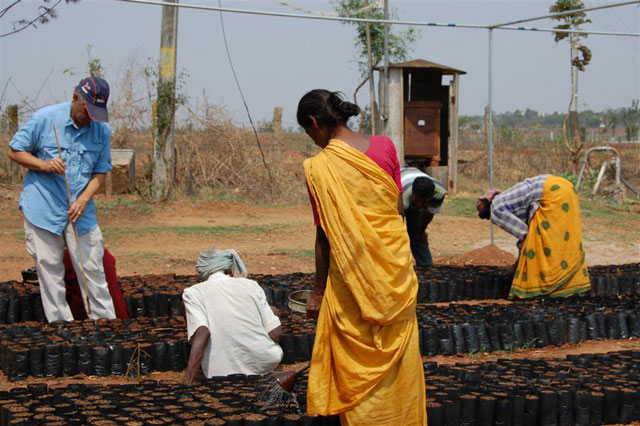
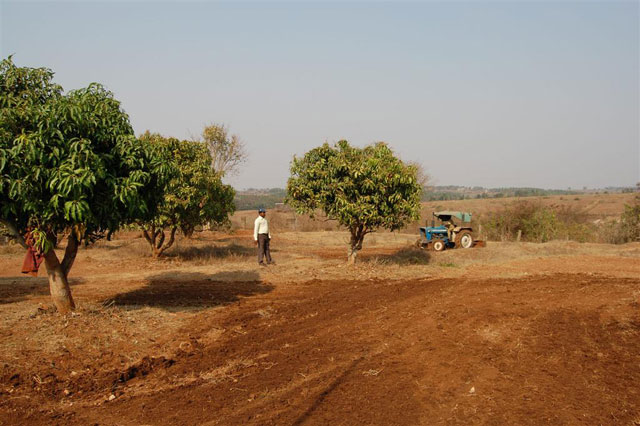
Reddy supervises the clearing of the land.

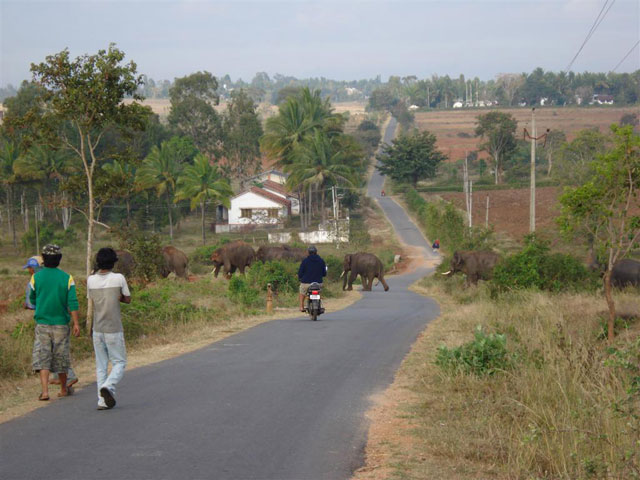
Elephants are beautiful animals, but they can be pests to farmers.
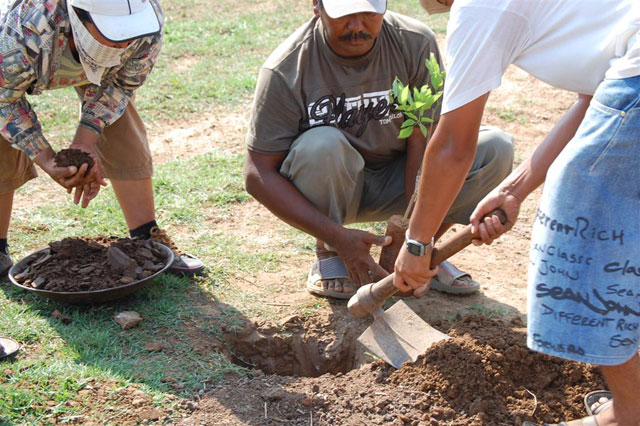
Pongamia pinnata seedlings are being planted in the demonstration plot at the Tibetan Rabgayling Settlement.
